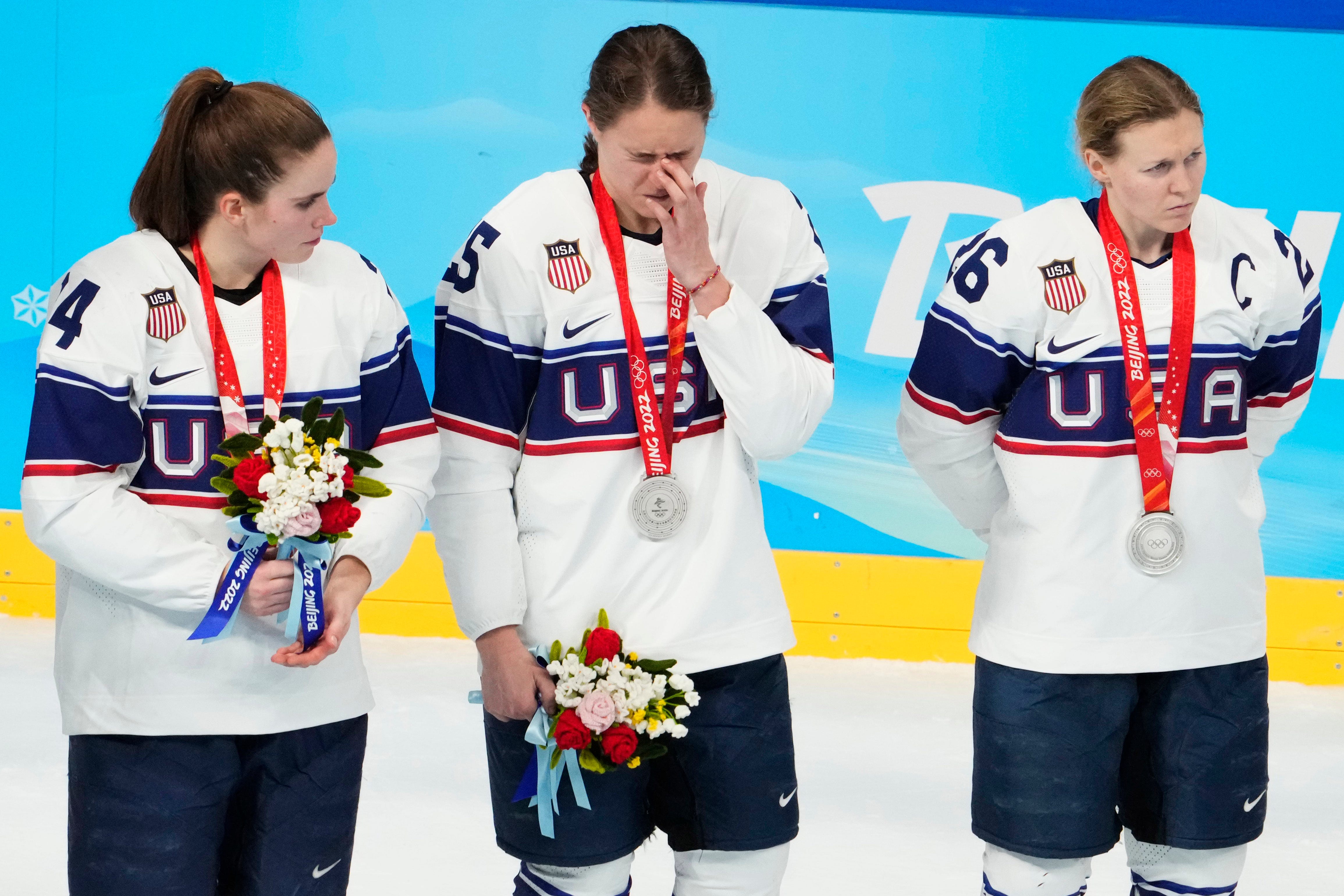Entire US team makes halfpipe final, giving men's freeskiers chance for podium sweep

ZHANGJIAKOU, China – The U.S. men’s success in the halfpipe hardly came as a surprise, even if it did come with suspense.
All four American freeskiers advanced to the Beijing Olympics final in qualifying Thursday, giving the country its best chance at a podium sweep.
The veteran team, which is largely the same from Pyeongchang four years ago, entered these Games with every skier in the top eight of the International Ski Federation’s points list.
The Americans’ path to getting through was slightly derailed after Aaron Blunck, the top-ranked skier in the world this year, fell late in his first run. But the three-time Olympian landed his second run to qualify in first.
“We kind of knew. We weren’t going to jinx it. In this event, above all else, we had a really good chance of getting all four guys into the finals,” said David Wise, the two-time defending Olympic gold medalist. “Aaron made it a little interesting for us by falling on his first run, so as soon as he landed his second run, I was like, ‘All right, we’re in. 4 for 4. It felt really good.’”
OLYMPICS NEWSLETTER: All of our coverage straight to your inbox
TEAM USA MEDAL COUNT: Every medal won by the US at Beijing Games
Olympic newcomer Birk Irving followed Blunck in third, while Wise qualified fourth. Alex Ferreira, who won a silver medal four years ago, qualified seventh.
The team’s position for Saturday’s final should feel familiar to most of the skiers. All four Americans qualified to the final four years ago, with Torin Yater-Wallace joining Blunck and Ferriera in the top three.
“We have such a deep team of talented athletes,” said Irving. “Just to get a spot and be here, it’s unreal. I think it really set in today during qualis.”
Indeed, the U.S. is so deep that it accounts for half of the top 10 in the FIS standings. Lyman Currier was in contention to make the U.S. team before suffering a knee injury in qualifying.
That depth is part of what led Gus Kenworthy to compete for Great Britain this Olympics. Kenworthy won a slopestyle silver in Sochi as part of a U.S. sweep, but decided to compete for the country where he was born and where his mother is from – for his final Olympics.
“I was stoked to watch the U.S boys kill it today because I love those guys and they all skied really well,” Kenworthy said. “I’m excited to compete alongside them in the final.”
In qualifying, Ferreira, Wise and Irving all put up first-run scores that would have gotten them through.
Blunck, meanwhile, landed low on his third hit in his first run and fell when he ran out of pipe on his final trick. It didn’t matter. His second run easily put him atop the field, ahead of New Zealand’s Nico Porteous, the 2018 bronze medalist, in second.
“Just gotta think past this and know that the goal is to live to ski another day and I have the ability to do that,” Blunck said.
While their teammates are some of the Americans’ best competition, the veterans are back in position to medal because they’ve kept up with the progression or led it themselves.
Ferreira said he struggled with the post-Olympics comedown that so many athletes have when they gear their lives toward a quadrennial event.
“I was stagnant for a long time and then all of the sudden Nico does both way 16s and I have to learn it, it makes me a better skier, it makes me a better person, it makes me just better overall,” Ferreira said. “It makes me happier.
“Within the last 12 months to a little bit over, I feel energized. I feel like me again.”
While the level of tricks was tame in the snowy halfpipe on Thursday, all expect several skiers to land double cork 1620s, the newest most difficult trick being done that requires two off-axis flips with 4½ rotations.
Even with lesser degrees of spin, double corks should dominate. Four years ago, Ferreira and Porteous each did five but Wise won because he did them spinning all four ways – left, right, switch (or backward) left and switch right.
But just spinning the 16s won’t be enough, Wise said. Judges will want to see difficult grabs. A safety grab near the skier’s boot won’t be enough.
“Anybody who can grab their 16s with something other than tindy, or safety, is going to do well,” Wise said.
Given their recent success, that’s likely to include the Americans. Once again, the whole team is back in the final with a chance at multiple medals.
“We all ride together. When you’re constantly skiing with the best guys in the world, you’re going to get better,” Wise said. “You’re going to keep improving, and you kind of almost lose track of the rate that people from other places in the world are improving at because you’re just skiing with your buddies.”